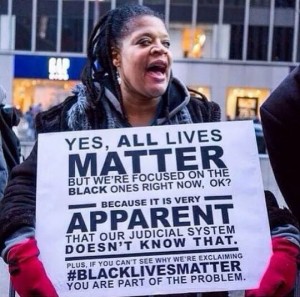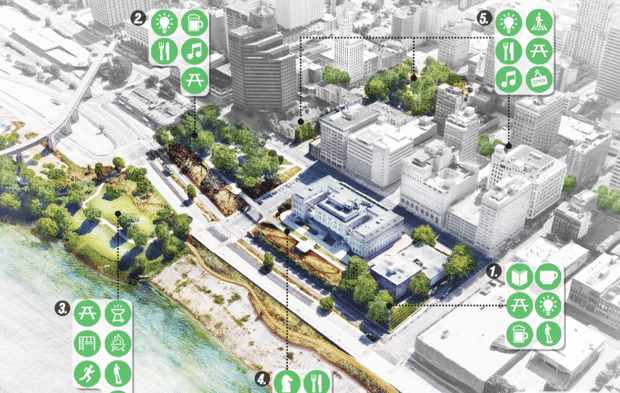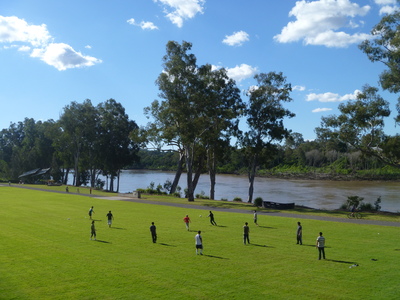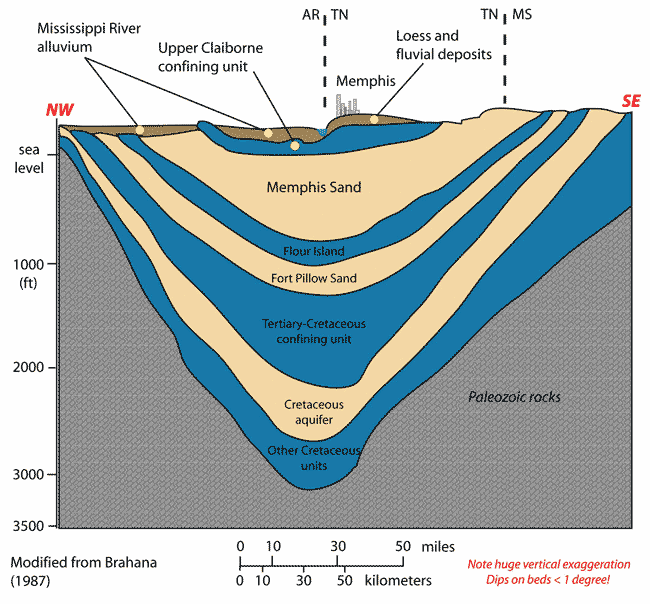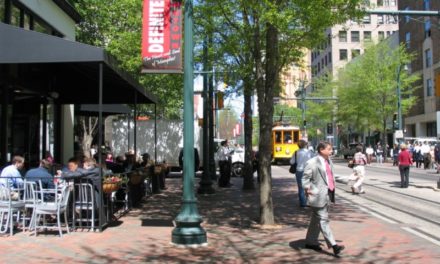In the next three days, we’re looking back to our 153 blog posts from last year to see which one you liked the most, based on readership. To that end, we’re posting the 15 most read posts counting down from #15 to #1. Based on the ranking, 2016 can be called the Year of the Park Activism, and you can see if you agree with us as we post the top 15 posts of last year.
Thank you for reading and commenting, but most of all, thank you for caring about the future of a city worth fighting for.
Here today are the #11 to #15 blog posts.
#15: Moving Beyond Talk To Fight Racism – July 8, 2016
And the cycle begins anew. Or, maybe, in truth, it never stopped.
The toxic stew of guns, racism, injustice, and anger continues to poison America, and we appear to lack the resolve, the political will, and the honesty to confront it directly and courageously.
Maybe this time will be different. Of course, we’ve said that before.
The news media always move on, chasing “breaking news” by the hour, passing off talking heads and talking points as analysis and insight and ignoring the follow-up that is needed to make sure that politicians’ sound bites are followed up with real action.
We know that it doesn’t have to be this way. Dr. Martin Luther King Jr. proved it.
He had his movement marginalized and demonized, he was vilified as a Communist, his rooms were bugged by his government, and when some of his nonviolent protests turned violent, he was blamed. But he refused to let anybody turn him around, and it was in looking to what could be that he was able to rise above what was.
Most of all, he called on the news media to show the ugly face of racism while refusing to return hate to police officers who beat protesters, people who sabotaged marches, and segregation forever extremists who bombed churches.
Perhaps, those were simpler times. Today, the emphasis is on the instantaneous, the revolution in social media, and a political system emphasizes short-term advantage over long-term answers. Today, we are all reporters, and the live streaming of people being killed while being arrested or reaching for their driver’s license may in time even turn the traditional news media to puncture the superficial and examine the reasons for the cycle.
In addition to social media, what’s also changed is the ubiquity of guns which leads to the militarization of police departments and a climate of uncertainty about who is armed pushes racism to the surface in what used to be routine police actions.
It also pushes racism to the surface as shown by those that who quickly argue that the Black Lives Matters movement – just as they did with Dr. King – is responsible when peaceful protests are disrupted by those bent on doing harm.
It’s pushed to the surface in the white faces on television who are wed to their denials that there is racism in America and argue with African Americans that it does not exist. They criticize extreme comments by a few African Americans while saying nothing about the racist comments made and the ugliest stereotypes perpetuated on news stories every day about our president, African Americans, and even black victims of crime.
There’s a tendency in the media to treat this as a debate (point-counterpoint) of talking heads with their talking points rather than stimulate a meaningful analysis of our history, an examination of our culture, and a way forward that strengthens our nation to live up to its creed.
Read more here.
#14: Another Milestone: Kresge Foundation’s New Grant Program For Memphis – December 6, 2016
Memphis’ location may have been good for logistics but camped out in a part of the country where it was separated by a couple hundred miles from the closest major urban areas and surrounded by fields and rural towns, we lacked the kind of competitive rivalries found in other areas.
But more than that, city government, over 20 years, demonstrated little interest in national meetings and discussions exploring new urban strategies – which often put cities on the radar for philanthropic funding. In fact, Memphis mayors for two decades rarely even attended the U.S. Conference of Mayors conferences.
It’s one of the reasons that Memphis challenges languished without the injection of new ideas and smart thinking that could disrupt trend lines. As a result, a 1980 map showing the c-shaped Memphis areas of concentrated poverty looks strikingly similar to one in 2005.
Fortunately, some Memphis-based philanthropies stepped up, but missing was the involvement – if not interest – of national philanthropies with deep, deep pockets. That began to change when A C Wharton was elected mayor of Memphis and it continues with Jim Strickland.
As a candidate, Mr. Wharton called for greater involvement at a national level and pledged a greater pursuit of federal and philanthropic funding. Once in office, he followed through, becoming a regular participant in convenings of the Obama Administration, in meetings of the U.S. Conference of Mayors, and in reaching out to national foundations. In addition, it was a priority for members of his city administration, notably Douglas Scarboro, Kerry Hayes, and Maria Fuhrmann, who, in his stead, remained in contact with national organizations and developed an unprecedented focus on policy.
There is a number of examples of their success, but chief among them was Bloomberg Philanthropies grant for the Social Innovation Fund which emulated a New York City program using cash incentives to encourage positive behaviors by families in poverty. That set the stage for arguably the pivotal disruption in turning around city government’s national positioning: a $4.8 million grant in 2011 to create the Mayor’s Innovation Delivery Team (now Innovate Memphis). Headed by Doug McGowen, now Chief Operating Officer for Mayor Strickland, and with a supporting cast that included Tommy Pacello, now president of Memphis Medical District Collaborative, the Mayor’s Innovation Team operated outside of City Hall but was instrumental in setting a more ambitious agenda for the city administration.
Best of all, they were willing to push the envelope and ask impertinent questions, to bring in national authorities to help answer them, and to apply the answers, when possible, to solve an important Memphis challenge. While it wasn’t always able to implement its entire agenda, it was able to shape the conversation in ways that inspired changes in the direction and the agenda on issues like performance management, neighborhood business development, smarter growth and investments, Complete Streets, tactical urbanism, and economic gardening.
Just as valuable was the Innovation Team’s ability to propel the work of other organizations working in complementary areas like livability, economic opportunity, and better transportation and give them a bigger megaphone to advocate for their causes.
If Bloomberg Philanthropies was a milestone in Memphis’ campaign to become nationally relevant, the second milestone was the entry of the $3.5 billion Kresge Foundation. Less prescriptive than Bloomberg Philanthropies, its emphasis was more about Memphians shaping their own destinies and inspiring more local social entrepreneurship. In three years, Kresge Foundation has invested more than $2.5 million in Memphis organizations.
Read more here.
#13: Finding The Park That Martin Luther King Riverside Park Wants To Be – May 25, 2016
The Overton Park greensward parking controversy is a potent reminder of the passion that Memphians feel for their “Central Park,” the centerpiece for one of the most enlightened chapters in the city’s history, the one featuring two great parks and Memphis’ parkways.
That they were conceived 114 years ago makes them Memphis’ most elegant testament to the power of visionary city planning and should put them at the top of the city’s bragging rights. And yet, regularly overlooked when we talk about this progressive chapter in the city’s history is that it also produced Riverside Park, now Martin Luther King Riverside Park.
But it’s not just overlooked in the retelling of the history of Memphis parks and the parkways. Its potential has been overlooked almost from its birth, and it presently hints at what it could be.
But first, the history.
The parks and parkways plan involved two of America’s most famous planning names, Olmstead and Kessler. As the 19th century drew to a close, city government entered into a contract with John C. Olmstead, son of famed park designer Frederick Law Olmstead Sr., and he provided advice on how the parkways could connect two sites, one on Riverside (Cow Island) Road south of the city and another at Lea’s Wood, a virgin forest on the eastern edge of the city. The land for the parks was purchased in October, 1901, and the parks would become Riverside Park and Overton Park.
The parks and the parkways were designed by pioneer urban planner and landscape architect George E. Kessler of Kansas City, who, during his 41-year career completed more than 200 projects and 175 plans, including 26 park and boulevard systems. When he began his work in Memphis, he was also creating the master design plan for the Louisiana Purchase World’s Fair in St Louis of “Meet Me in St. Louis” fame.
The City of Memphis’ 445 acres at the Wilderberger Farm became Riverside Park, whose construction moved more slowly than Overton Park’s. Upon its opening in 1903, it was considered remote and largely inaccessible, requiring a four-mile carriage ride from Memphis or a 20-minute trip by river steamer, according to the Tennessee Encyclopedia of History and Culture. There are stories of daylong excursions by steamer to Riverside Park where families took picnics and ate them overlooking the Mississippi River.
As part of Mr. Kessler’s work over 13 years, he also redesigned three of Memphis’ four 1819 public squares and designed three small parks – Forrest, Confederate, and Gaston Parks. In total, by 1906, when the parkways were officially completed, Mr. Kessler had designed, developed, and opened 1,750 acres of parkland for Memphis in one of the earliest efforts to apply modern comprehensive urban planning and design principles in the South.
Memphis’ motivation for all this park development was its desire to rebrand Memphis in the wake of its devastating Yellow Fever epidemics and loss of it city charter. As the 20th century began, the city had quadruped its size through annexations and the parks and parkways were part of a progressive civic agenda, ushering in what is now considered the city’s Gilded Age and what was called at the time the “Greater Memphis Movement.”
Mr. Kessler’s original concept of meandering boulevards around Memphis evolved into a rectilinear design that incorporated and improved existing streets. At the terminus of the parkways at Summer Avenue northeast of Overton Park, he measured out a mile “speedway” for buggy racing, but that was put to a stop when the public pressured officials into enforcing a speed limit on the entire parkways system as automobiles became more prevalent – there were about 1,000 by 1910. (Most Memphians traveled aboard the extensive trolley system, Memphis Street Railway, which ran 150 cars daily over 109 miles of tracks.)
In an early demonstration of the power of smart planning, Overton Park and the parkways soon became among the most desirable residential areas in Memphis, according to Beverly Bond and Janann Sherman’s Memphis: In Black and White. There’s no reason something similar, a “Parkways Strategy,” could not have the same effect today, attracting people into Memphis, particularly middle class families. It was a fact of life that African Americans were excluded from these popular areas at the time, denying them the wealth accumulated by white families in the form of real estate. But today, a Parkways Strategy could be a way to strengthen, stabilize, and rebuild areas and increase wealth for all Memphians.
From the beginning, Riverside Park was a lower priority than Overton Park, and Mr. Kessler was pressured by City Fathers (the term was especially apt at that time) to concentrate his attention on the eastern park. As a result, it quickly became a showplace with bridle paths and a bandstand for nightly concerts at dusk. A golf course was added in 1904 and a meager menagerie made up the zoo when it opened in 1908, having evolved without any city planning (a tradition that apparently continues today).
Read more here.
#12: Memphis/Shelby County Reach Moment Of Truth About Minority Business – April 4, 2016
The 21st century dawned with such hope, and chief among the reasons for optimism was the emergence of a group of young African Americans determined to improve the community and its political opportunities for their generation.
That’s why it’s so disheartening in Memphis today to see what 15 years of hard work has done to so many of these gifted men and women.
Their optimism has been ground down for some by inertia that prevents substantive progress in increasing opportunity while decreasing inequality. The high expectations of their youth have been replaced by a world weariness that stems from working in the trenches to create more inclusive economic development and to open up decision-making to more diversity.
Their aspirations have been tempered by the lack of progress on core issues where there is more lip service than action, and their confidence hasn’t necessarily grown by seeing behind the curtain. Urged to get involved by white leaders, they fine some of same people holding back when their support is most needed to make change happen.
But, most discouraging of all is the fact that some of them have given up, moving to other cities (while even more are thinking of joining them). In other words, for them, Memphis is at a make or break moment, a time to put up or shut up, a time to prove that it deserves their presence and appreciated their talents.
Here’s the thing: there’s now a new generation of African Americans who are looking to the generation just ahead of them for proof that they should stay, that they can make a difference in Memphis, that progress is being made, and that the city and county is a place where they want to invest their lives.
When you ask them, you often hear a similar answer: the jury is still out.
The opinions of the generation ahead matter to these young professionals, who have seen them as role models and given their opinions special weight.
There are no rose-colored glasses. There is only the clear-eyed view of a city that talks about young professionals but doesn’t do nearly enough to give them ways for their opinions to have real traction or to drive the agenda or to change things.
The 40-somethings have soldiered on although many times, it seems that the powers-that-be absorb their issues into their talking points but don’t do much to address them, much less engage in the honest, no-hold-barred conversations about race and class that could inspire new understanding and breakthroughs.
For example, the conversations would reveal the feelings that neighborhoods that are celebrated for turning themselves around are not the ones where they were reared, which continue to struggle with blight, decline, and population loss. It feels like that when talent is discussed and when programs are conceived to attract talent, people don’t squarely address the fact that Memphis’ competitive advantage is to be a hub of African American talent. In addition, programs dedicated to attracting the “creative class” don’t seem to be aimed at people like them and all the encouraging, upbeat anecdotes about new buildings and new investments can’t mask the realities of earning disparities, low wages attached to low skill jobs, and the poverty that remains a birthright for too many Memphis children.
About 15 years ago, the then twenty-somethings thought the answer was to get into the rooms where the decisions were made, but it regularly feels that there must be other rooms because too little change is taking place in the rooms where they are.
Read more here.
#11: Drilling For Answers About Aquifer Risks From TVA Wells – December 12, 2016
The fix was in from the beginning.
At least that’s the conclusion that could be easily drawn from the way that the Tennessee Valley Authority’s use of 1.3 billion gallons of our drinking water every year as cooling water in the Allen Combined Cycle Plant has relentlessly moved through the approval process.
It has marched forward despite serious questions about its impact on the aquifer that is the source of our water and about the alternative of using wastewater. The amount of drinking water needed by TVA amounts to 10 gallons of water for every household in Shelby County.
It is a curious feature of many public agencies, especially large ones like TVA, that the loyalty by the bureaucrats seems to attach to the agency rather than to the public who owns it. As a result, the public’s concerns get swept aside and calls for greater transparency are treated as unnecessary inconveniences.
We’ve all seen this behavior, such as when it comes to roads and infrastructure. We’ve seen the consequences in roads that are wider than they should be and that fueled sprawl and subsidized developers.
These were gambles that has cost taxpayers dearly, but they pale in comparison to the gamble of being wrong about TVA’s five wells into Memphis Sands, our source of drinking water. The cost of a mistake cannot be overstated except to say it would be devastating to our community.
Built into the process is the attitude that we should not challenge TVA’s technical positions or ask for more information from independent sources. Rather, it’s an attitude anchored in our traditional lack of self-worth. We should simply be grateful for TVA’s investment in our community although it’s not making the investment, the public is.
As happens so often in these kinds of processes, key information is not released promptly or not until the public demands it and even when it is released, it’s often with a “trust us” approach to questioning.
In the process to evaluate TVA’s wells, the bureaucrats predictably pull out the rules and regulations and allow them to trump reason and due diligence. Listening to attorneys representing the Groundwater Control Board and the Health Department, it’s makes us wonder why public boards are needed at all. Automatons can rigidly read the rules and say yes or not. The purpose of the members is to ensure the public good and to act in the community’s best interest.
Sometimes, it’s hard to decide what is more insulting: the refusal by some public boards and officials to consider fully public concerns or that they believe we don’t see all of this for what it is.
The recent Groundwater Control Board’s unanimous vote to reject an argument about the threats to our most precious natural resource – our aquifers – is a case in point. It was bureaucratic theater, because it was clear from the beginning that the seven members had already decided how they were going to vote before the meeting began.
Read more here.
**
Join us at the Smart City Memphis Facebook page for daily articles, reports, and commentaries relevant to Memphis.

